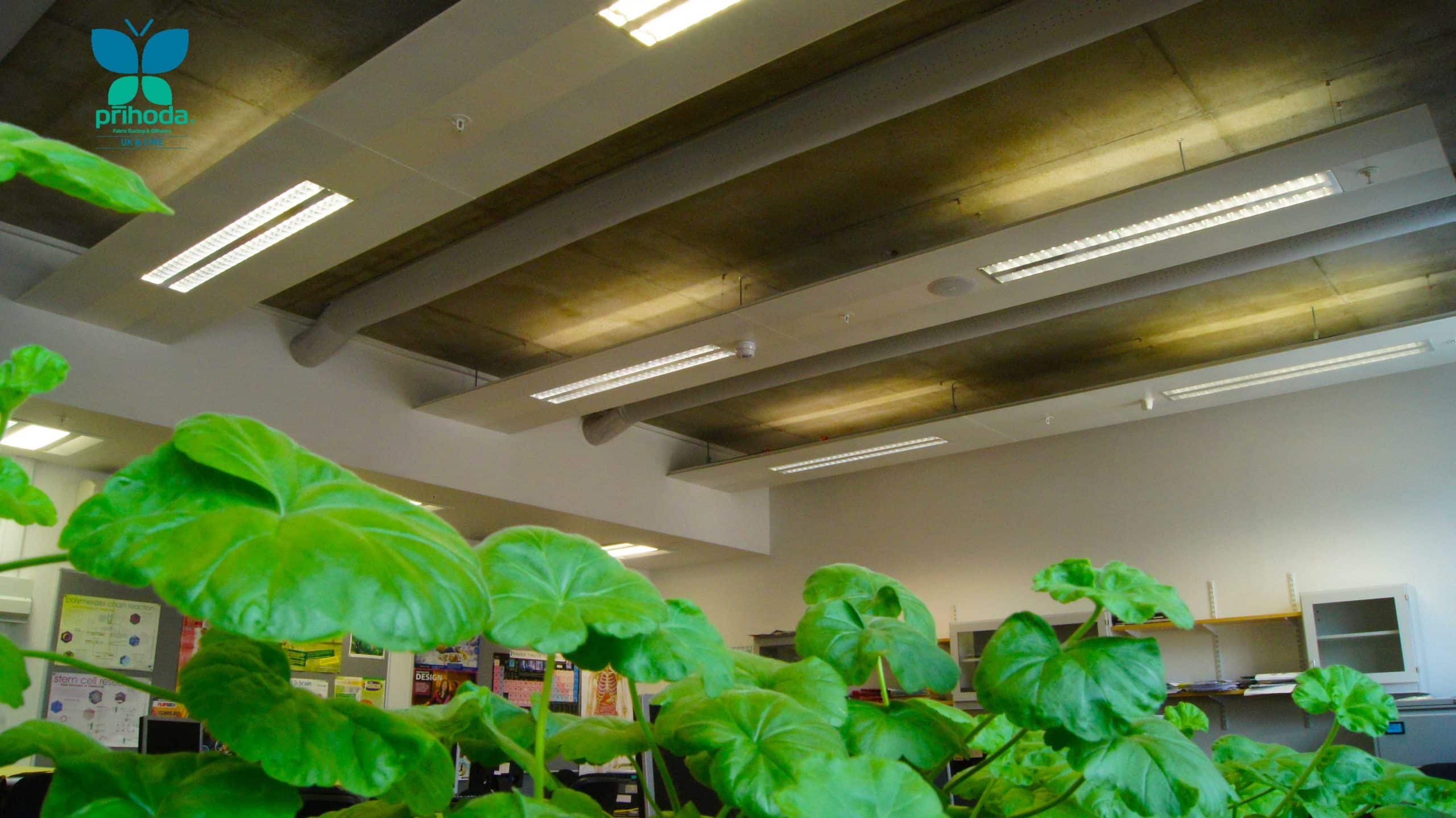Fabric Sock Systems and Noise Reduction in the Workplace


Noise levels are a major consideration when selecting ventilation ducts and diffusers, but particularly in office spaces where employee productivity and satisfaction can be impacted. In offices where most workers are seated in the same spot for much of the day, noises can have an outsize impact to employee morale. Fabric socks for offices are designed with noise reduction in mind to enhance worker comfort and support productivity.
Quieter Offices with Fabric Socks
There are typically many sources of noise in an office, but ventilation equipment such as fans, grilles and diffusers are common contributors to the overall background noise. Fabric ducts are usually quieter than rigid ducts because the material is soft and can absorb some of the sound waves. However, to ensure that the fabric socks provide office ventilation quietly and unobtrusively, it is very important that they are well designed. But how are fabric socks designed to achieve quiet office ventilation? To understand the general design approach, it is worth looking at the causes of noise in fabric ducting.
Main causes of noise in office ventilation
Air movement
Like rigid ventilation ducting, the air that blows through a fabric duct is itself a source of noise. If the duct is undersized for the application’s required air volume, the excessive airflow rate through the duct can be a major source of noise in an air sock. At a too high volumetric flow rate the air forces itself through the duct at a high velocity, which causes more noise due to the interaction between the air and the internal surface of the duct.
Vibration
Excess velocity, excess pressure and internal turbulence in the fabric sock can also lead to vibration and duct movement. For example, if the inlet is too small for the supply air flow, the duct will vibrate and cause unwanted noise. Similarly, if the pressure is not high enough to inflate the duct properly, it can also generate more noise. Sometimes vibration is caused by the geometry of the fabric sock and not just the size. Whenever the air suddenly changes direction, such as at bends and top-fed inlets, it can become slightly turbulent which can then cause vibration.
Diffuser selection
As seen above, air can generate noise whenever it suddenly changes direction. This is also true for the diffusers, such as nozzles and perforations. The size, type and number of diffusers on the fabric sock has an effect on the overall noise of the fabric duct, as each individual diffuser forces the air in its vicinity to change its flow direction.
Fabric socks for office applications
Fabric duct design for office applications must take into account the main sources of duct noise to ensure that the resulting air socks can operate within a reasonable sound range. Fabric socks for offices are rarely installed at a great height so they most often use small laser-cut perforations to supply the air. Since the air doesn’t have to be blown from a large distance from the occupied zone, the diffusers are usually small and don’t contribute as much noise. To further prevent excessive noise, it is crucial that the fabric sock is sized appropriately for the flow rate of the air and its pressure.
Through careful design, a fabric sock can offer a noise-free and convenient alternative to other office air diffusers, delivering the right amount of air to the right places without causing any unwanted draughts or excessive noise.
Looking for more information?
Our experts are on hand to answer any questions. Why not give us a call or drop us a message, We’ll work with you to find the right solution.
Contact us

